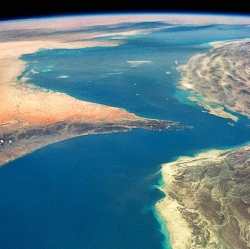
About a month ago, an asteroid that was estimated to be at least a quarter-mile wide zoomed past Earth at a speed of 77,000 miles per hour. Though it was 1.25 million miles away even at its closest, the asteroid was considered “close” to Earth; in the grand scheme of the entire galaxy and beyond, 1.25 million miles isn’t much. Though space is replete with asteroids of all sizes flying about, it seems the risk of one of them hitting Earth anytime in the near future is slim to nonexistent. NASA, however, isn’t taking any chances. This week at the 7th IAA Planetary Defense Conference, the space agency’s Jet Propulsion Laboratory’s Center for Near Earth Object Studies is leading a simulated asteroid impact scenario, in other words, pretending an asteroid is on its way to hitting Earth.
Why, you ask? To make sure we’re ready if it happens for real. Since there’s not a way to physically simulate an asteroid hitting Earth , the simulation is about practicing coordination between various US federal agencies, international space agencies, and other decision-makers, scientific institutions, and emergency managers.
Throughout this week, participants in the simulation are being briefed with consistently-evolving information about the fictitious asteroid; how fast it’s moving, how big it is, the trajectory it’s taking through space, where on Earth it’s likely to hit, etc.
Participants then have to work together to make decisions and give feedback for next steps. In real life, there’s an international agreement that a 1 in 100 chance of impact is the threshold to begin response actions.
“Each time we participate in an exercise of this nature, we learn more about who the key players are in a disaster event, and who needs to know what information, and when,” said Lindley Johnson, NASA’s Planetary Defense Officer. “These exercises ultimately help the planetary defense community communicate with each other and with our governments to ensure we are all coordinated should a potential impact threat be identified in the future.”
This isn’t the first time this sort of simulation has taken place; the exercise is part of the National Near-Earth Object Preparedness Strategy and Action Plan that the White House published in 2018, and NASA has participated in several other impact scenarios, some in conjunction with the Federal Emergency Management Agency.
Also, the simulation is about to get a little more real, with an actual attempt to deflect an asteroid in space initiating this summer. If that sounds very Armageddon-like to you, you’re not terribly far off; NASA’s Double Asteroid Redirection Test mission is scheduled to launch in July or later on one of SpaceX’s Falcon 9 rockets, heading for an asteroid called Didymos.
